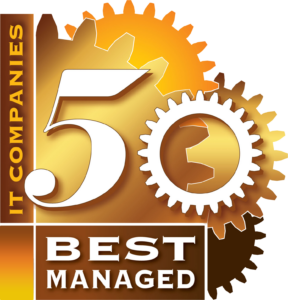
IT Outsourcing vs. In-House IT Management: What’s Best for Your Business?
IT Outsourcing vs. In-House IT Management: What’s Best for Your Business?

As companies in Ontario continue to embrace digital transformation, the question of how to manage IT infrastructure becomes increasingly critical. Should businesses rely on in-house IT management or outsource their IT needs to specialized providers? This decision can significantly impact a company’s operational efficiency, security posture, and overall success. In this blog, we will explore the pros and cons of both approaches and provide insights to help you determine the best fit for your business.
The Growing Importance of IT Management
Effective IT management is essential for ensuring the smooth operation of business processes, safeguarding sensitive data, and staying competitive in a technology-driven market. Companies in Ontario face unique challenges, including evolving cybersecurity threats and compliance requirements.
In-House IT Management Pros:
1. Control and Customization: Having an in-house IT team allows businesses to maintain direct control over their IT infrastructure. This enables tailored solutions that align closely with specific business needs.
2. Immediate Availability: In-house IT staff are readily available to address issues as they arise, potentially reducing downtime and ensuring quick resolution of problems.
3. In-Depth Knowledge: Employees working within the company develop a deep understanding of its systems, processes, and culture, leading to more effective and cohesive IT support.
Cons:
1. High Costs: Hiring, training, and retaining skilled IT professionals can be expensive. Additionally, maintaining up-to-date technology and infrastructure requires significant investment.
2. Resource Limitations: Small and medium-sized businesses may struggle to afford a comprehensive IT team, limiting their ability to address complex IT challenges.
3. Scalability Issues: As businesses grow, their IT needs become more complex. Scaling an in-house team to meet these demands can be challenging and costly.
IT Outsourcing Pros:
1. Cost-Effectiveness: Outsourcing IT services to an experienced provider can be more economical than maintaining an in-house team. Businesses can access top-tier expertise and technology without the overhead costs.
2. Scalability and Flexibility: Outsourced IT services can easily scale to meet the evolving needs of a growing business. Providers offer flexible solutions that adapt to changing requirements.
3. Access to Expertise: Outsourcing gives businesses access to a broad range of specialized skills and knowledge. Providers stay updated with the latest technology trends and cybersecurity threats, ensuring robust IT management.
4. Focus on Core Business: By outsourcing IT management, businesses can focus on their core operations and strategic goals, leaving the technical complexities to experts.
Cons:
1. Less Direct Control: Outsourcing means relinquishing some control over IT operations. Businesses must rely on the provider’s ability to deliver services effectively.
2. Potential Communication Issues: Working with an external provider may present communication challenges, especially if the provider is not local or lacks understanding of the business’s unique needs.
3. Dependency on Provider: Relying on a third-party provider can create dependency, making it crucial to choose a reliable and trustworthy partner.
Making the Decision: In-House vs. Outsourcing
When deciding between in-house IT management and outsourcing, businesses must consider their specific needs, budget, and long-term goals. Here are some factors to weigh:
1. Budget Constraints: Evaluate the financial implications of both options. Consider the total cost of ownership, including salaries, benefits, infrastructure, and potential cost savings from outsourcing.
2. Business Complexity: Assess the complexity of your IT requirements. If your business demands specialized skills and technology, outsourcing may provide a more comprehensive solution.
3. Growth Projections: Consider your company’s growth trajectory. Outsourcing offers greater flexibility to scale IT services in line with business expansion.
4. Risk Management: Analyze the risks associated with both approaches. An outsourced IT provider may offer better security and compliance capabilities, reducing the risk of data breaches and regulatory issues.
CopperTree’s Comprehensive IT Services
At CopperTree, we understand the unique challenges faced by small and medium-sized businesses in Ontario. As your Outsourced IT department, we provide a wide range of services designed to enhance your IT infrastructure, improve security, and support your business growth. Our solutions include:
– Proactive Monitoring and Maintenance: Ensuring your systems run smoothly and efficiently with minimal downtime.
– Cybersecurity Solutions: Implementing robust security measures to protect your business from cyber threats.
– Compliance Assistance: Helping you navigate and adhere to industry regulations and standards.
– Strategic IT Planning: Providing expert guidance to align your IT strategy with your business goals.
Deciding between in-house IT management and outsourcing is a critical decision that can shape the future of your business. By carefully considering your needs and the benefits of each approach, you can make an informed choice that enhances your operational efficiency and security. If you’re looking to explore how outsourced IT services can benefit your business, get in touch with us to book a meeting. Let’s discuss how we can support your journey toward growth and technological excellence.




